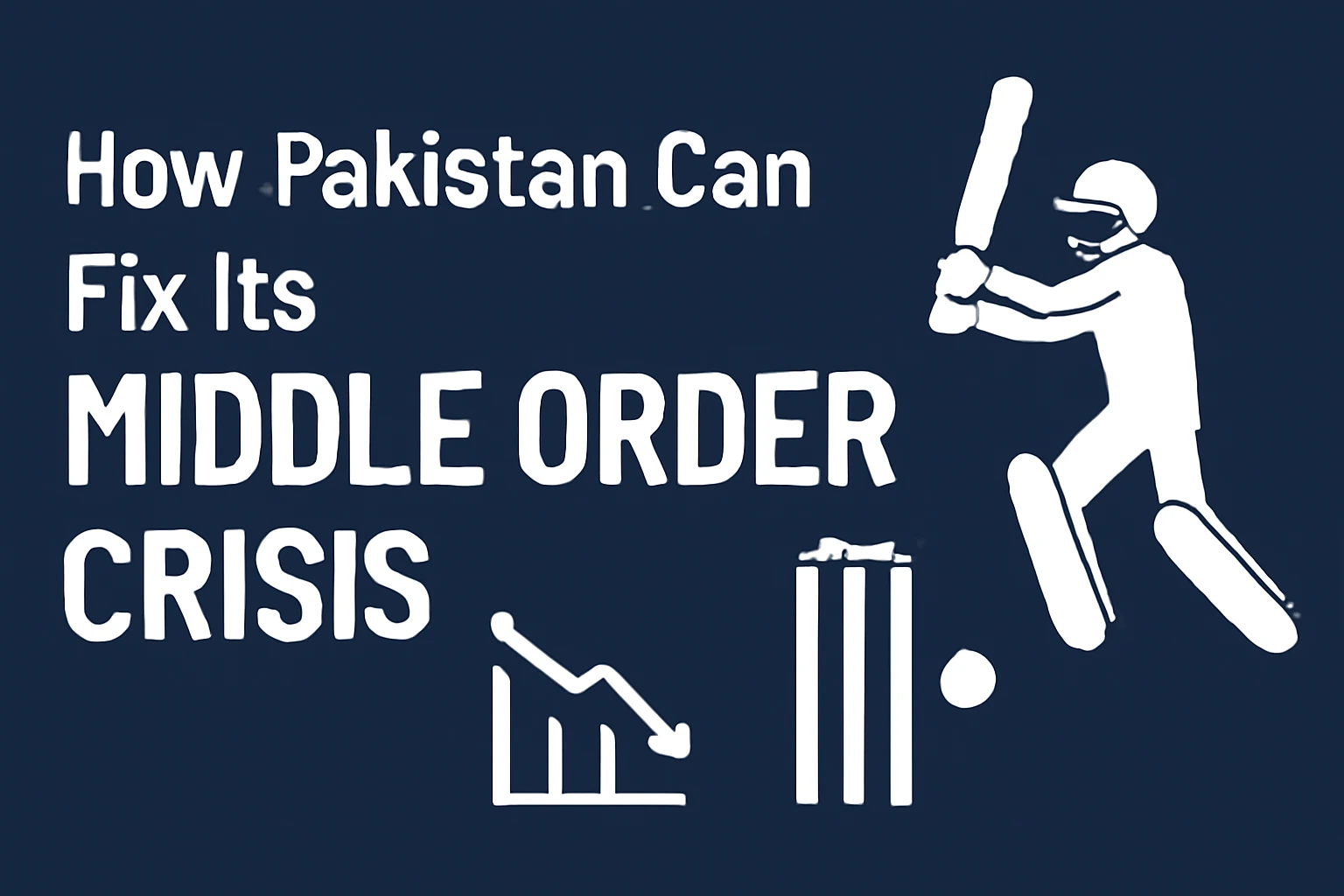Pakistan cricket has long been admired for producing extraordinary fast bowlers and flamboyant batters. Yet, despite these strengths, one persistent problem continues to haunt the team — the middle-order crisis. This challenge undermines Pakistan’s ability to consistently build or chase competitive totals and has cost them dearly in crucial matches. So, how can Pakistan fix its middle-order crisis? Let’s break it down.
Understanding the Middle Order Crisis
The middle order generally consists of batters who bat from positions 4 to 7 in cricket. Their job is critical — they need to stabilize innings after the top order, accelerate scoring when required, and guide the team through pressure situations. This area has been unpredictable for Pakistan, with middle-order players often failing to provide stability, resulting in sudden collapses.
Historically, Pakistan has seen some legendary middle-order batsmen—Inzamam-ul-Haq, Younis Khan, and Mohammad Yousuf—who could anchor the innings. Unfortunately, the team has struggled to find dependable players who can consistently perform this role in recent years.

Symptoms of the Crisis
One clear symptom is the frequent batting collapses after early wickets. When top-order batters fail, the middle order is expected to rescue the innings but often falters. Middle—order players are inconsistent—some show flashes of brilliance but lack regularity. This unpredictability has contributed to Pakistan’s losing close matches and weakened the team’s confidence.
Causes Behind Pakistan’s Middle Order Crisis
Lack of Stability and Consistency
Pakistan’s middle order constantly changes, with players being dropped and recalled frequently. This lack of a settled lineup prevents players from gaining confidence or developing chemistry. There’s also a noticeable absence of a clear anchor to hold the innings together and build partnerships.
Technical and Mental Challenges
Middle-order batsmen often face high-pressure scenarios like rebuilding after top-order failure or accelerating in death overs. Many have struggled with technical flaws against quality bowling attacks, particularly spin and short-pitched fast bowling. Their mental toughness to handle pressure and stay composed has been lacking.
External Factors
Frequent changes in team management and selection committees create uncertainty for players. Without clear communication and backing, players can feel insecure about their place, which can impact performance. Moreover, the domestic structure sometimes fails to groom players properly for the demands of international cricket.
Lessons from Successful Teams
Looking at teams like Australia, India, and England reveals how a solid middle order can transform a team’s fortunes. These teams blend experienced players with talented youngsters who know their roles well. Leadership is vital in fostering a culture where middle-order batters are empowered to express themselves without fear.
Strategies Pakistan Can Implement to Fix the Crisis
Establish a Fixed Core middle-order
Pakistan must identify and commit to a core group of middle-order players. Giving them consistent chances allows players to settle and build confidence. Avoiding unnecessary experimentation will reduce anxiety and improve performance.
Focus on Player Development
Investing in domestic cricket infrastructure and youth academies will better nurture talent. Training programs on technique, mental strength, and handling pressure should be mandatory. Regular exposure to competitive matches prepares players for international challenges.
Role Clarity and Specialization
Every middle-order batsman should have a defined role—whether as an anchor, aggressor, or finisher. This clarity helps players prepare mentally and tactically. Adapting batting styles to match situations can prevent panic and improve decision-making.
Enhancing Leadership and Mentoring
Senior players must take responsibility for mentoring younger batters, sharing experiences, and guiding them through tough times. A positive dressing room environment encourages risk-taking and learning from failures.
Use Data and Analytics
Modern cricket thrives on data. Pakistan should analyze opponents’ bowling patterns and tailor middle-order batters’s training accordingly. Personalized plans addressing individual weaknesses can uplift overall performance.
Emerging Talents and Future Prospects
Pakistan has several promising young batsmen showing potential for middle-order roles. Players like Haider Ali, Saud Shakeel, and Abdullah Shafique have demonstrated composure and skill. With proper guidance and opportunities, they can form the backbone of Pakistan’s middle order in years to come.
Challenges Pakistan May Face in Implementing Changes
Resistance from selectors and pressure from the media may challenge a steady rebuild. Balancing experienced players with youth requires careful management. Additionally, maintaining player morale amid failures will be crucial for long-term success.
Conclusion
Pakistan’s middle order crisis is a complex issue but far from unsolvable. With a focused approach to stability, player development, clear roles, and strong leadership, Pakistan can build a middle order that complements its formidable bowling attack. The journey requires patience and commitment, but a reliable middle order will help Pakistan consistently challenge for trophies and regain its place among cricketing elites.
FAQs
1. Why is a strong middle order crucial in cricket?
A strong middle order stabilizes the innings after early wickets builds partnerships, and adapts the scoring rate according to the game situation, making it vital for team success.
2. Who are the current middle-order players in Pakistan’s team?
Players like Babar Azam (when batting at number 3-4), Fakhar Zaman, Haider Ali, and Saud Shakeel have recently been seen in middle-order roles, though the lineup varies often.
3. How does inconsistency in the middle order affect the team?
Inconsistency leads to frequent batting collapses, puts pressure on bowlers to defend low totals, and reduces the team’s chances of winning tight matches.
4. Can young players solve the middle-order crisis alone?
While young players bring fresh energy, they need proper guidance, consistent chances, a supportive environment, and experienced teammates to succeed.
5. What role does coaching play in fixing the middle order?
Coaching develops technical skills, mental strength, and tactical awareness, helping middle-order batters handle pressure and perform consistently.
